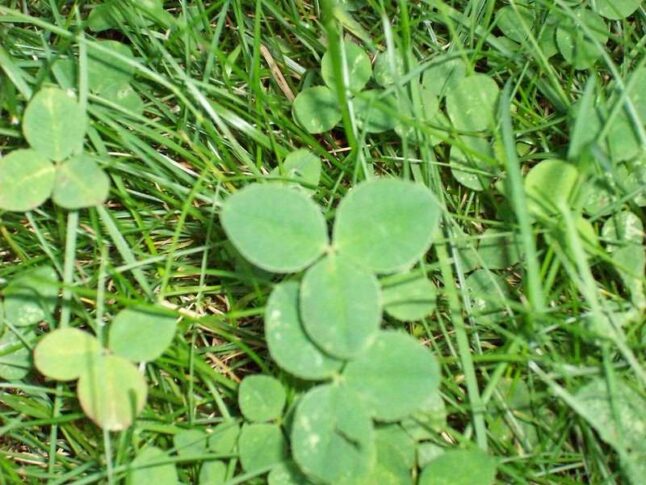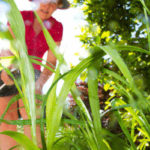
Homeowners everywhere are no strangers to weeds, and those in the Natural State are no exception. While some people don’t mind them, many consider these unwanted visitors to be eyesores on their manicured lawns. So how do you get rid of them? Here’s a complete guide to weed control in Arkansas.
How to Keep Your Arkansas Lawn Weed-Free

While you can dig up weeds with tools, most homeowners use herbicides for weed control. Herbicides can be broad-spectrum – attacking many types of weeds – or selective, specific to one kind of weed. Herbicides can also be pre-emergent or post-emergent.
Pre-emergent or pre-emergence herbicides are used to prevent weeds from sprouting in the first place. You can’t use a pre-emergent herbicide when weeds are already in your lawn.
Post-emergent or post-emergence herbicides, on the other hand, are used when weeds have already established themselves on your lawn.
When to Apply Pre-Emergent Herbicides
Arkansas homeowners should apply pre-emergent herbicides in late winter and early spring (February to March) to get ahead of warm-season broadleaf and grassy weeds. In particular, crabgrass preventers should be applied by March 1. However, if you plan to seed your lawn this summer, you should hold off on applying crabgrass preventer or other pre-emergent herbicides for grassy weeds.
Arkansas also has winter weeds like henbit and field madder. To prevent them from sprouting, you should apply pre-emergent herbicides in the fall.
When to Apply Post-Emergent Herbicides
You want to apply post-emergent herbicides early in a weed’s life before it has the chance to flower and spread its seeds. Time your herbicide applications during the weeds’ growing season; applying herbicides when they’re still seedlings is best. As soon as you see them sprouting, you should get your herbicides ready.
For summer weeds, this usually means applying post-emergent herbicides from March to April before the hottest summer months set in. You want them to be actively growing when you apply the herbicide so their roots can take it in.
For winter weeds, the same principles apply. Depending on the type of weed, you might need to apply post-emergence anywhere between fall and early spring. You want to target them before they bloom and make seeds.
Common Arkansas Weeds to Look Out For
The first step in weed control is identifying the weeds correctly. Do you know how to tell your weeds apart? Here are some common weeds you can find in Arkansas lawns.
1. Spotted Burclover

Spotted burclover is one of many sticker weeds that can be found in Arkansas lawns. They’re called stickers because of their prickly fruits, which can cling to clothing and fur.
- Duration: Annual
- Season: Cool-season
- Classification: Broadleaf
- Defining Features
- Leaves: Wedge-shaped with purple markings in the center
- Flowers: Small and yellow
- Fruit: Prickly, burr-like
2. Clovers

Many types of clovers invade Arkansas lawns. The clovers that thrive in the Natural State are quite varied. Some are annuals, while others are perennials; some species are warm-season weeds, while many others are cool-season weeds.
The information below covers white clover, one of the most common lawn weeds you’ll see in Arkansas:
- Duration: Perennial
- Season: Cool-season
- Classification: Broadleaf
- Defining Features
- Flowers: Clusters of white flowers on top of naked flower stalks about 5 to 7 inches tall
3. Crabgrass

Crabgrass is a pesky and persistent grassy weed. The University of Arkansas System Division of Agriculture (UADA) considers it the most common weed found in lawns and gardens.
- Duration: Annual
- Season: Warm-season
- Classification: Grassy
- Defining Features
- Leaves: Hairy leaf sheaths
- Seed Heads: Finger-like, with 3 to 8 fingers
4. Common Chickweed

There are two species of chickweed found in the Natural State, but the common chickweed is more prevalent; the other species is the sticky chickweed.
- Duration: Annual
- Season: Cool-season
- Classification: Broadleaf
- Defining Features
- Flowers: White flowers that look like they have 10 petals but only have 5 upon closer inspection
5. Dandelions

Although dandelions are warm-season weeds, they flower throughout the year. They’re quite easy to identify, especially after their flowers have turned into their iconic white puffballs.
- Duration: Perennial
- Season: Warm-season
- Classification: Broadleaf
- Defining Features
- Flowers: Bright yellow flowers
- Leaves: Low to the ground, long, narrow, and notched
6. Sedges

Many kinds of sedges can creep into your Arkansas lawn. The more persistent ones are yellow and purple nutsedge, as they form tubers and rhizomes. Yellow nutsedge tubers taste sweet, while purple nutsedge tastes bitter.
This information covers the yellow nutsedge:
- Duration: Perennial
- Season: Warm-season
- Classification: Sedge
- Defining Features
- Seed Heads: Yellow when mature
- Leaves: Sharp, pointed, narrow, and three-ranked; similar to turfgrasses but quite stiff
- Height: 1 to 2 feet tall
If you’d like a more extensive list of Arkansas weeds, you can check out this list of weeds from the UADA. You can also check the weed ID database on the UADA’s Cooperative Extension Service website.
Professional Weed Control and Fertilization Services for Arkansas
One of the most important aspects of weed control is maintaining a thick and healthy lawn. If your turf is strong, weeds will find it difficult to establish themselves because they must compete with your grass. That’s why it’s also important to fertilize your Arkansas lawn properly. Many lawn care companies in Arkansas offer weed control and fertilization services together.
The average cost of professional weed control is around $95 for a ¼-acre lot. However, it can range from $65 to $120. The cost depends on your lawn’s size, the weed control method, and the type of herbicide (if applicable).
LawnStarter can connect you with a lawn care pro in your area in just a few minutes so you can get a free quote on lawn treatment services, including weed control treatments and fertilizer applications.
FAQ About Weed Control in Arkansas
There are a few organic herbicides that you can use, with the most popular one being corn gluten meal. You can also make your own homemade organic weed killer with horticultural vinegar.
A good weed-pulling session should also put a stop to these unwanted lawn visitors if you do it right – meaning you remove the entire root system from underground.
It’s better if you don’t. Fertilization and weed control aren’t typically done during the same times of the year. If you use a weed and feed product, you run the risk of one product not doing its job properly, especially if the weed control product included is a pre-emergent herbicide.
Weed and feed products also typically target broadleaf weeds, so your grassy weeds will remain untouched.
For a more in-depth guide, you can read our how-to article on applying herbicides. Here’s a short step-by-step guide:
1. Identify your weeds.
2. Buy the right herbicide.
3. Check the weather.
4. Put on personal protective equipment.
5. Mix the herbicide solution after reading the instructions.
6. Spray carefully.
7. Water in your herbicide if there’s no rain forecasted in the next few days.
8. Clean your equipment.
If you need to, you can. However, it’s better to do spot treatments instead of lawn-wide herbicide applications because it’s much more eco-friendly. It also wastes less product.
Yes, it does. Aside from maintaining a healthy lawn (which chokes out weeds), mowing also prevents weeds from flowering. Mowing also damages weeds, which can help weaken them.
Yes, in the same way that fertilization helps with weed control. Aerating your Arkansas lawn improves lawn health, and healthy lawns aren’t as susceptible to weeds. Aeration also helps herbicides reach the root systems of weeds more easily.
Of all the best grass seeds for Arkansas, the one that is the best at preventing weeds is Bermudagrass. It spreads aggressively in a thick mat, not leaving any room for weeds to butt in.
Tell Weeds to Leaf Your Arkansas Lawn Alone
Weeds are almost never welcome on lawns. They make your lawn messy and steal nutrients that your Arkansas lawn needs to stay healthy and green. However, the prospect of pulling or spraying weeds doesn’t appeal to everyone.
LawnStarter can help those who would much rather pay someone to take care of their weeds for them. We can connect you with professional lawn maintenance companies all over Arkansas that can handle your lawn treatments. Get a free quote from a lawn care service near you today.
Are you from Little Rock, Fayetteville, Bentonville, or the surrounding areas? We can connect you with pros in those service areas and more across the Natural State.
Main Photo Credit: hamik / Canva Pro / License




![10 Best Backpack Weed Sprayers of 2023 [Reviews]](https://www.lawnstarter.com/blog/wp-content/uploads/2021/12/Best-Backpack-weed-sprayers-150x150.jpg)
![7 Best Battery-Powered Weed Eaters of 2023 [Reviews]](https://www.lawnstarter.com/blog/wp-content/uploads/2021/03/Best-Battery-Powered-Weed-Eaters-150x150.jpg)